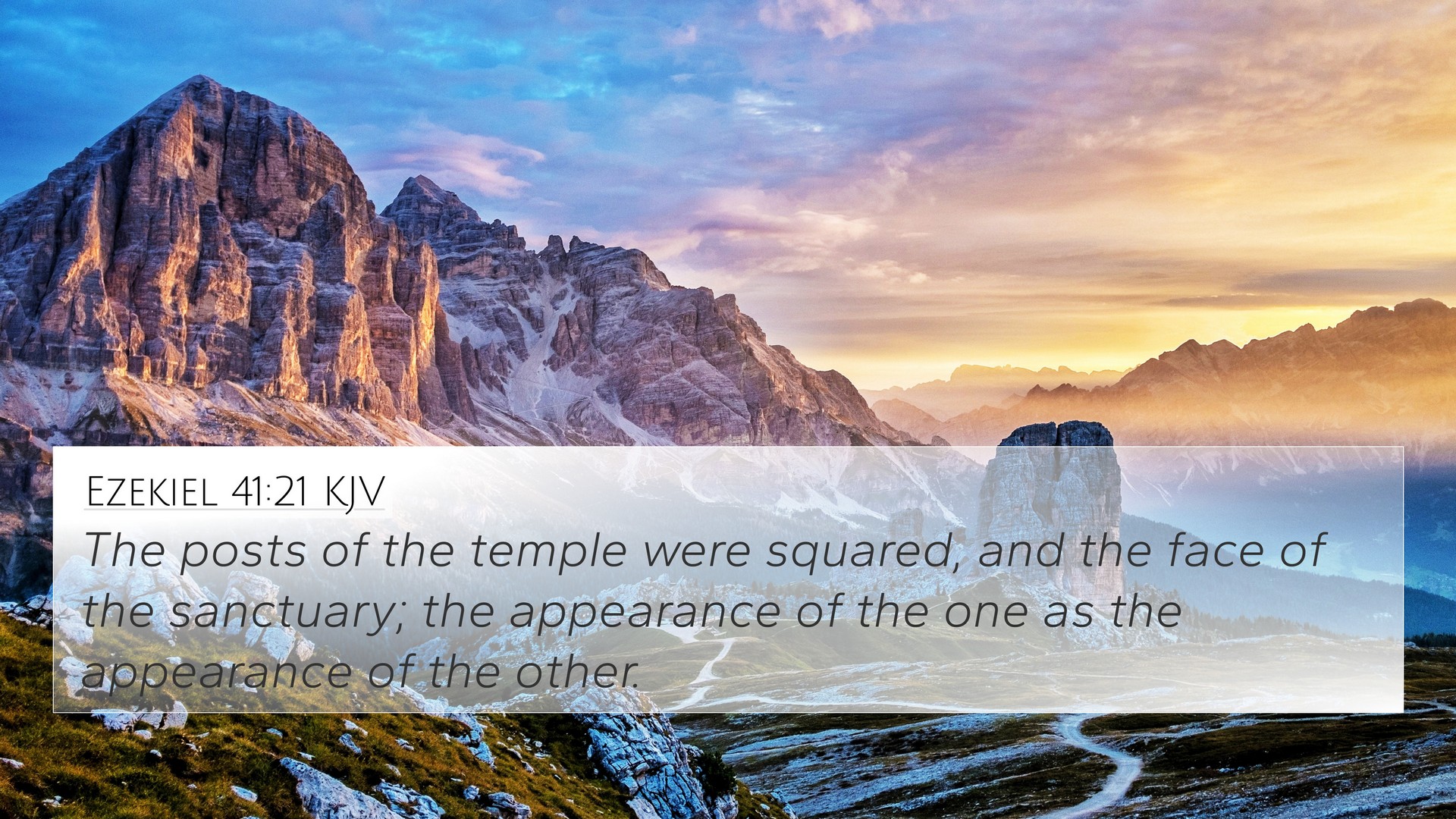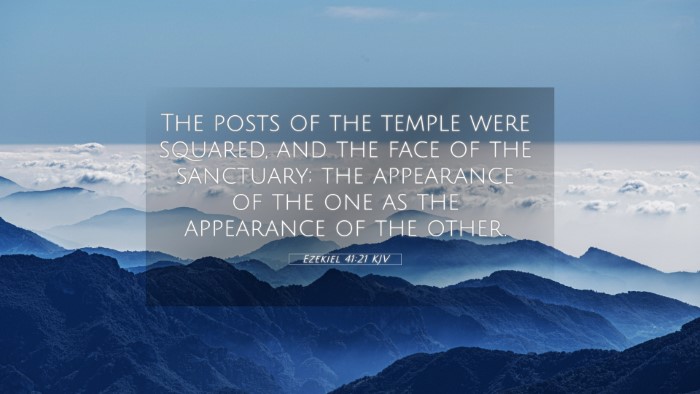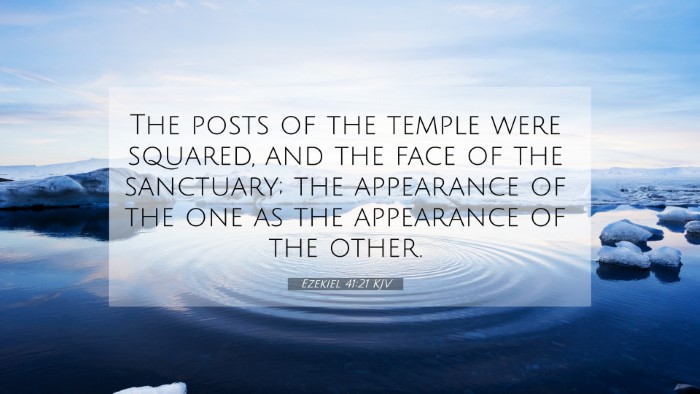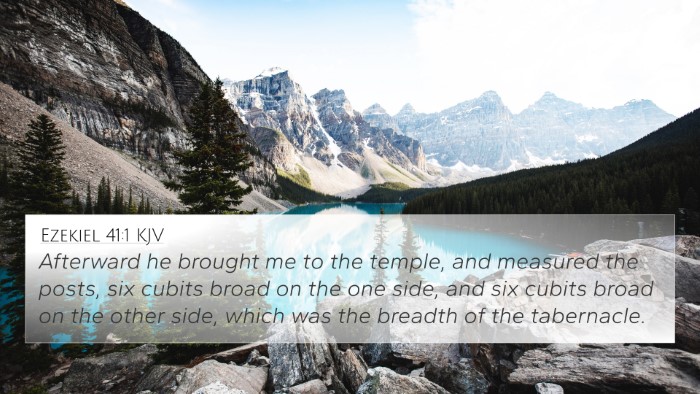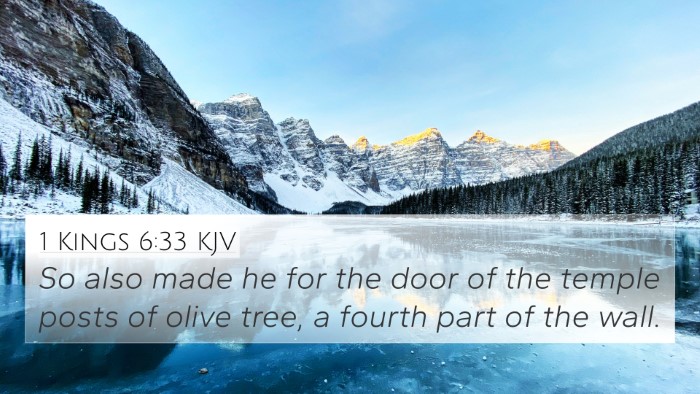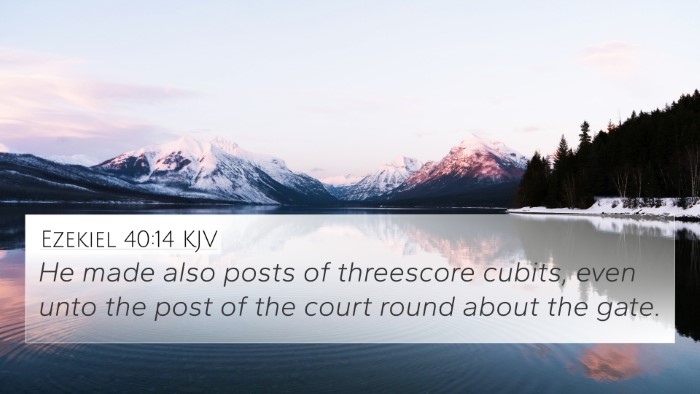Ezekiel 41:21 - Meaning and Commentary
Ezekiel 41:21 states: "And the posts of the temple were squared, and the face of the sanctuary was the appearance of the most holy place."
This verse describes the architecture of the temple as revealed to Ezekiel, emphasizing its squared pillars and the sanctity of the most holy place.
Summary of Insights from Public Domain Commentaries
Matthew Henry's Commentary
Matthew Henry suggests that the “squared” nature of the temple signifies the perfection and order of God’s design. The temple serves as a representation of God’s holiness and the careful delineation of His presence among His people.
Albert Barnes' Commentary
According to Albert Barnes, the description of the “most holy place” indicates the strict holiness and separation associated with God. This section of the temple is meant to reflect not just architectural beauty, but also the moral and spiritual purity expected from God’s dwelling.
Adam Clarke's Commentary
Adam Clarke elaborates on the significance of the temple structure. He notes that the squared posts symbolize strength and stability, integral attributes of God's sovereignty. The “face of the sanctuary” refers to the divine encounter between God and man, highlighting the sacredness of this interaction.
Major Themes and Interpretations
-
Divine Presence:
The “most holy place” represents God’s dwelling among His people, emphasizing the importance of approaching Him with reverence.
-
Holiness and Separation:
The description underscores the distinction between the ordinary and the sacred, reminding believers of the need for spiritual purity.
-
Architectural Symbolism:
The squared posts may represent the unchanging nature of God, reinforcing the foundation of faith within the structure of worship.
Cross-References and Connections
This verse relates to various other scriptures that reveal the interconnections of biblical themes, especially concerning holiness and God's presence. Here are some relevant cross-references:
- Exodus 26:33-34: The design of the tabernacle, establishing a similar theme of sacredness.
- 1 Kings 6:16: Description of Solomon’s temple, echoing similar details of construction and sanctity.
- Hebrews 9:3: The Holy of Holies in the New Testament reflects the ongoing significance of God’s presence.
- Isaiah 6:1: A vision of God's holiness, connecting the themes of reverence and divine majesty.
- Revelation 21:22: The absence of a temple in the New Jerusalem reflects the ultimate unity of God with His people.
- Matthew 23:16: Reflecting on the significance of the temple in Jewish worship and its symbolism.
- Psalm 27:4: The desire to dwell in the house of the Lord, a direct link to the longing for divine presence.
Thematic Bible Verse Connections
Exploring the connections between various Bible verses can enhance understanding. Here’s how Ezekiel 41:21 connects with broader biblical themes:
- Covenant and Presence: The temple symbolizes the covenant relationship between God and Israel, as echoed in Jeremiah 31:33.
- Sacredness of Worship: Leviticus 10:3 highlights the consequences of irreverence, underlining the importance of holiness.
- Divine Instruction: The blueprint provided to Ezekiel reflects God’s directive in worship, linking to Exodus 25:40.
Conclusion
Ezekiel 41:21 invites a deeper examination of divine architecture, holiness, and the sacredness of God's dwelling. This interpretation can enrich the study of scripture by connecting themes and drawing parallels across different biblical texts. Tools for Bible cross-referencing, such as concordances and cross-reference guides, are valuable in identifying connections between verses and thematic explorations.
